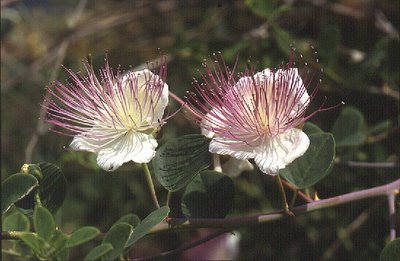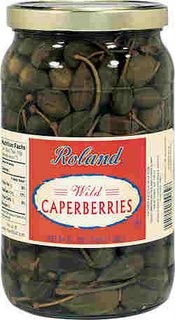
It may come a surprise to many, but as far as capers go, Morocco is number one in the world. Moroccan caper production stands at around 20,000 tons annually, making it the world's top producer of this Mediterranean plant and also first exporter, notably to the American and European markets.
The figure was released, in Fès on Wednesday, at a meeting of the Fès Provential Agriculture Direction (DPA).
Caper (Capparis spinosa) is a shrub from the Mediterranean region. It is best known for its edible buds and fruit which are usually consumed pickled. The pickled or salted caper bud is often used as a seasoning or garnish. Capers are a common ingredient in Mediterranean cuisine.
The grown fruit of the caper shrub is prepared similarly to the buds, as caper berries.
 Speakers at the DPA study day spoke of the economic and social role of caper that grows mainly in Morocco in the Fès, Taounate, Taroudant, Safi, Sidi Kacem, Al Hoceima, Missour and Taza regions.
Speakers at the DPA study day spoke of the economic and social role of caper that grows mainly in Morocco in the Fès, Taounate, Taroudant, Safi, Sidi Kacem, Al Hoceima, Missour and Taza regions. A caper farmer can get MAD 10,000, or 1,000 euros, per hectare, which is equivalent to three times the earning of cereal crops.
Capers have a sharp piquant flavor and add pungency, a peculiar aroma and saltiness to comestibles such as pasta sauces, pizza, fish, meats and salads. The flavor of caper may be described as being similar to that of mustard and black pepper.
Capers are said to reduce flatulence and to be anti-rheumatic in effect. They are recorded as hepatic stimulants and protectors, improving liver function. Capers have reported uses for arteriosclerosis, as diuretics, kidney disinfectants, vermifuges and tonics. Infusions and decoctions from caper root bark have been traditionally used for dropsy, anemia, arthritis and gout. They contain considerable amounts of the anti-oxidant bioflavinoid rutin.
There is a strong association between the caperbush and oceans and seas. Capparis spinosa is said to be native to the Mediterranean basin, but its range stretches from the Atlantic coasts of the Canary Islands and Morocco to the Black Sea to the Crimea and Armenia, and eastward to the Caspian Sea and into Iran.
Capers probably originated from dry regions in west or central Asia. Known and used for millennia, capers were mentioned by Dioscorides as being a marketable product of the ancient Greeks.Tags: Morocco, Fès, agriculture,Moroccan

No comments:
Post a Comment